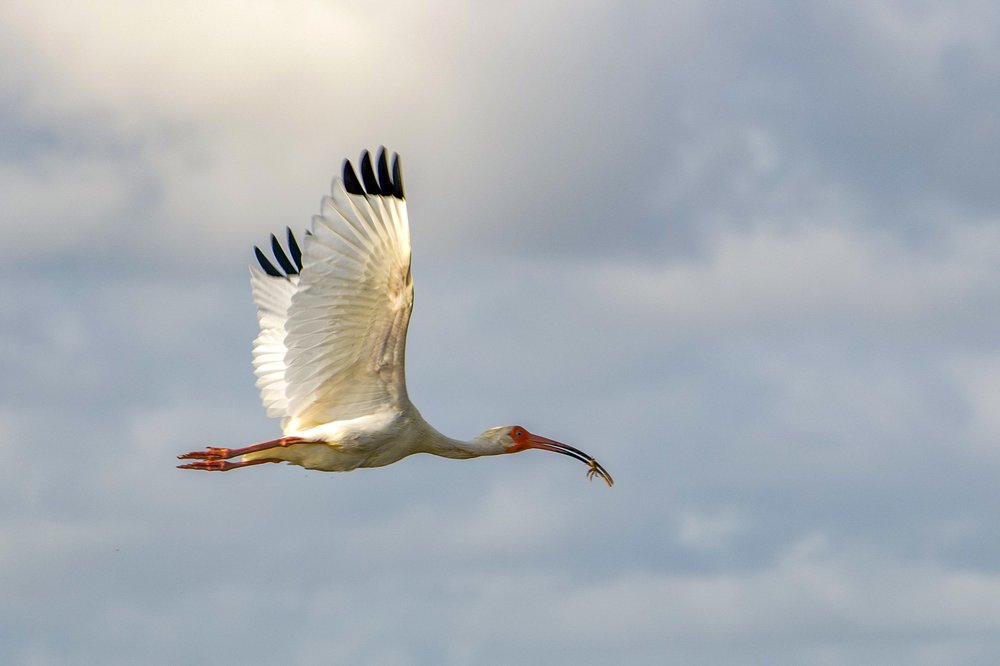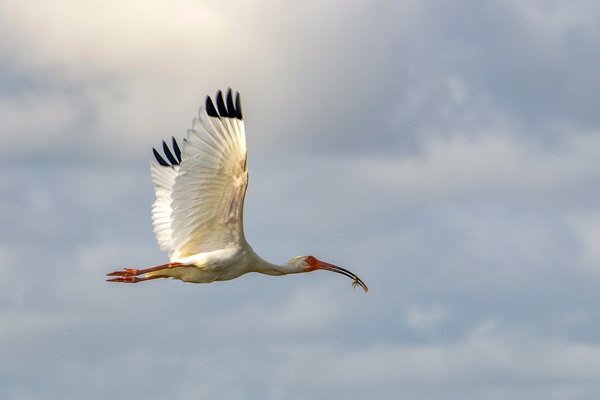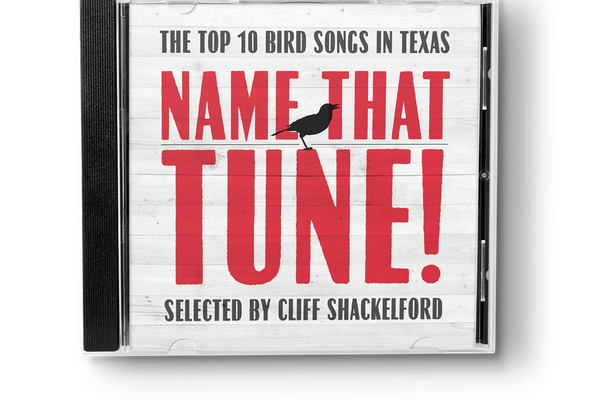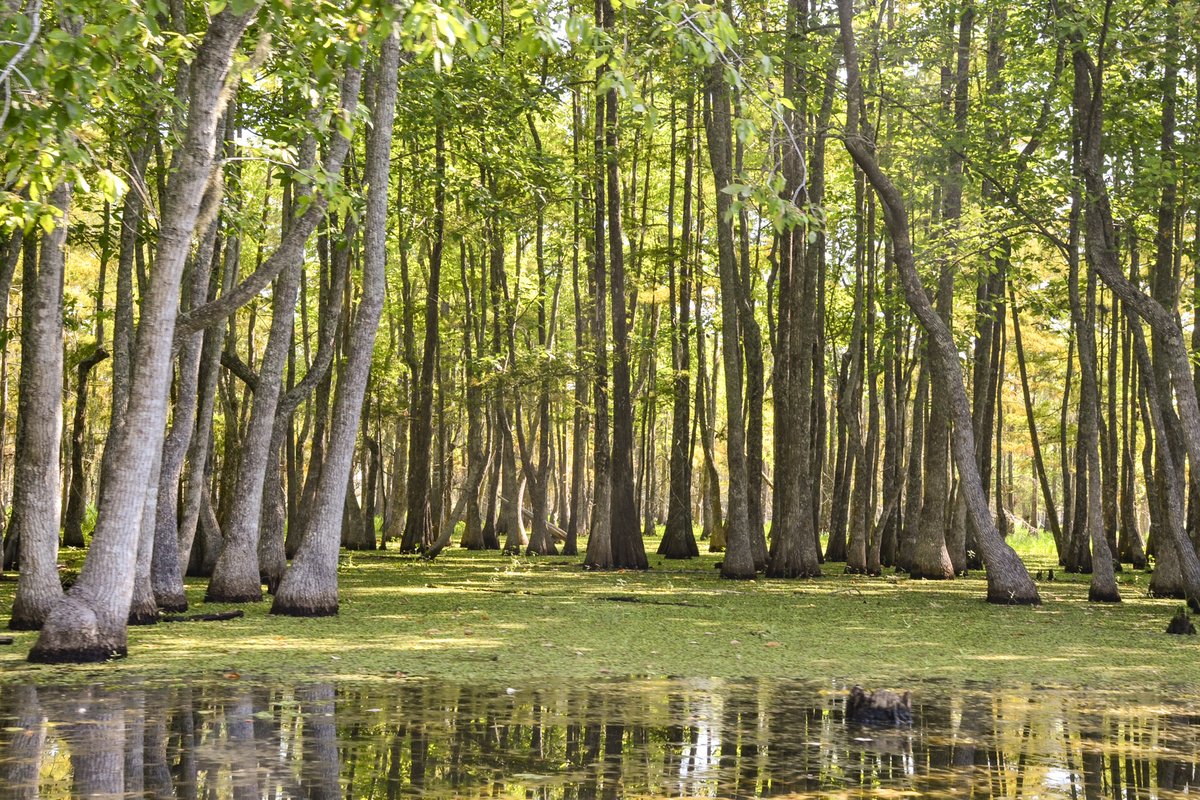Ask anyone if they know what an ibis is, and many will say it is that odd-looking bird of ancient Egyptian hieroglyphics. In Egypt, the ibis was the sacred bird of Thoth, the god of wisdom and writing. Yet Texans needn't go to Egypt to see one. There are three ibis species found in our state, and all are readily recognizable by their long, scythe-like beaks. Among the three, the white ibis (Eudocimus albus) is the most common.
When a white ibis hatches, it is brown, but earns its namesake color as it matures. As adults, the birds sport reddish-orange legs and beaks that starkly contrast with their white bodies, and black wing tips that are generally visible only when the birds are in flight. They mate in the spring, building their nests in trees and shrubs near water, and are very territorial. Males will protect their nests from intruders, including other white ibises, by angrily snapping their beaks and lunging toward trespassers.
It is not unusual to see small groups of these medium-sized, stilt-legged birds walking along the sides of coastal roads — or even in suburban lawns — with heads pointed downward, feverishly poking their long beaks into the ground.


Chase Fountain | TPWD
Chase Fountain | TPWD
Once most commonly found in Central and South America, white ibises are now ubiquitous along the Gulf Coast and southern Atlantic, ranging from Texas to Virginia, with some flocks numbering in the thousands. Their abundance is related to weather and rainfall; the rainier the winter-to-spring season, the greater the number of breeding birds. Although as many as 32,000 breeding pairs have been recorded in Texas, with the highest concentration along the coast, they are not as widespread here as they are in Florida. In fact, they earned the name “Florida chicken” in the pioneer days, when early Floridians hunted them for (supposedly) tasty table fare.
Despite at times being found far from the shore or bays, they are most at home in shallow fresh or brackish water, where they voraciously feed as long as 10 hours per day on crayfish, crabs, shrimp, fish and small insects. When foraging, they sweep their long beaks back and forth just under the surface, probing the muddy or sandy bottom. It is common to see other wading birds, such as egrets and herons, following along after them, catching the escaping prey stirred up by the ibises. Since its meal isn't visible in the cloudy water, the white ibis relies on tactile sensation in its bill to find edible creatures. Once something is caught, the ibis pauses to break it apart before eating it, which presents a perfect opportunity for a heron or another white ibis to jump in and steal a meal.
While not exactly the bird portrayed on the walls of ancient Egyptian tombs, the white ibis is as strikingly and oddly shaped as its North African cousin, and well worth taking a look at.









